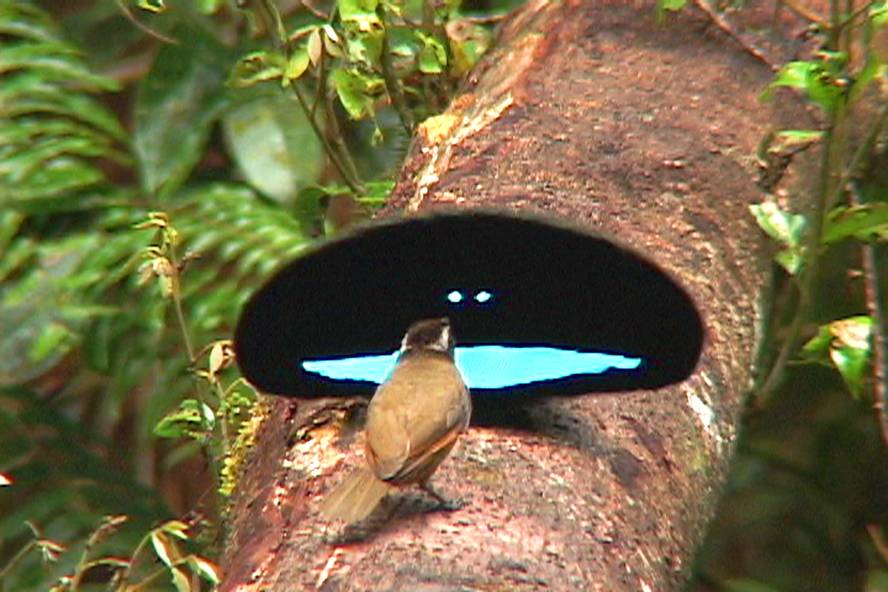How do birds of paradise get this kind of black feathers?

Many studies have shown how the internal pigments and nanostructures of living beings produce color, but scientists still were struck by the intense black color that some birds have. Paradise birds endemic to Australia (Paradisaeidae), for example, use superblack feathers to highlight their colorful spots. Harvard researchers have clarified that the basis of these superblack feathers could have a specific microstructure of lumens.
In fact, black color occurs when total absorption of visible light occurs. In the case of typical black birds it is reflected around 5% of the light, while in the case of paradise birds only 0.05% of the light is reflected. Therefore, they absorb almost 100 times more light than the first ones, like the ultra-absorbent materials created by man.
According to scientists, superblack feathers have a morphological structure more complex than conventional black feathers: instead of simple fibers, they have branched and vertically inclined fibers. Researchers attribute to these structures the ability to absorb more visible light. The work has been published in the journal Nature Communication.





